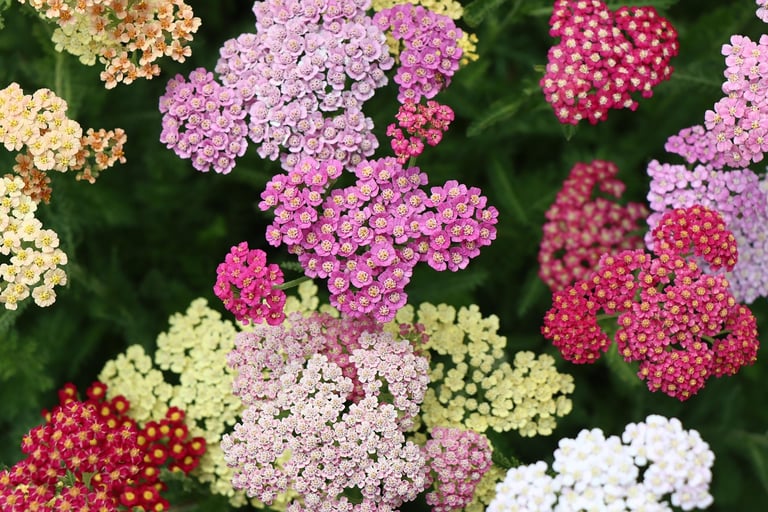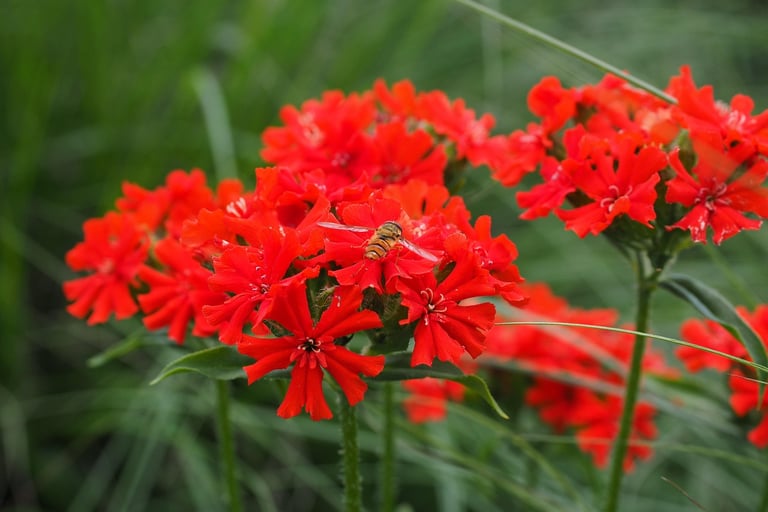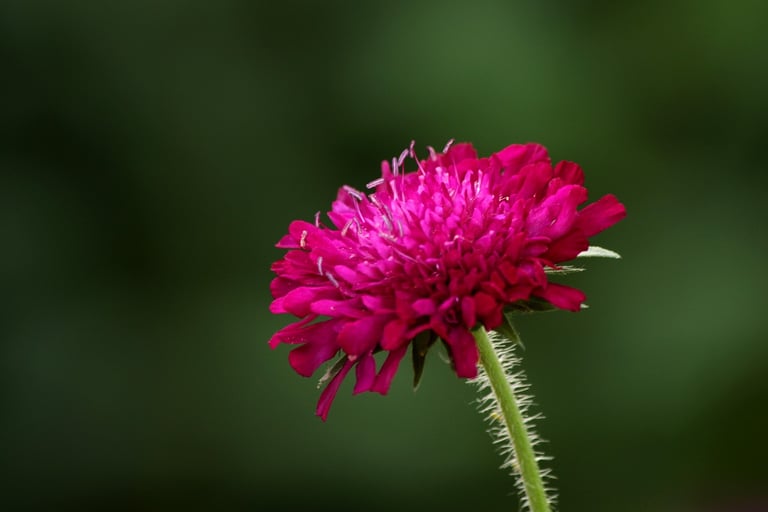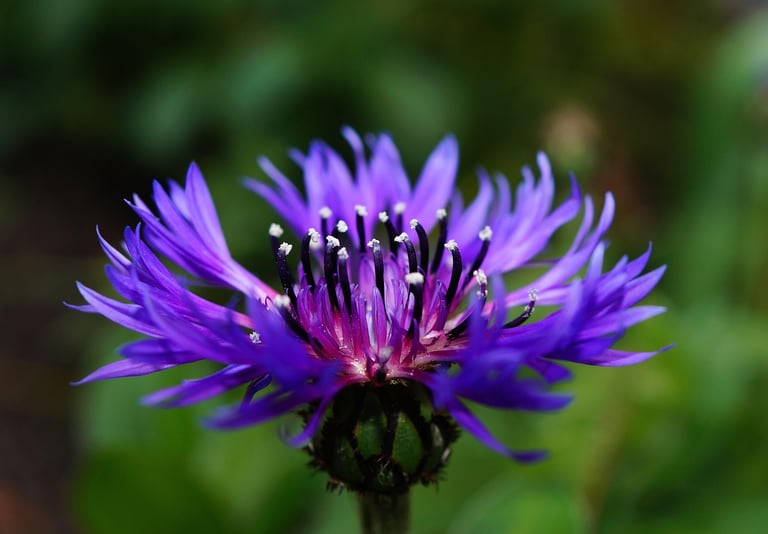10 herbaceous perennials for temperate gardens
These are some of the best hardy perennial flowers that you can grow in your garden
Bheinn
9/23/20254 min read


The term herbaceous perennial refers to a grouping of plants that typically lose their foliage over winter and regrow again from the base the following spring. These plants are not woody, which puts them in contrast with shrubs. There are many reasons for favouring herbaceous perennial flowers in a garden over annual plants, not least their hardiness, lack of maintenance requirements or need to disturb the soil and the fact you can have a more or less permanent flower border over the years without buying plants repeatedly. The following is a list of ten of my favourite herbaceous perennials; all of these plants are fully hardy in UK winters and are resistant to slugs and snails, and tend to drought tolerant once established too. In short, they're easy plants to grow.
Echinacea purpurea
Family: Asteraceae
Flowers: late summer /early autumn
Height: 60cm
Echinacea is a genus of flowers in the daisy family Asteraceae that are native to Eastern North America. Also known as cone flowers, these distinctive purple or occassionally white flowers have a hard orange 'cone' or disc floret in the centre that is quite beautiful in itself. They have been cultivated and are now available in a range of colours besides the wild pink form, although I find nature does it best when it comes to colours with these flowers.
Rudbeckia fulgida var. sullivanti 'Goldsturm'
Family: Asteraceae
Flowers: late summer / early autumn
Height: 75cm
Another member of the daisy family from Eastern North America, but this time with a strikingly different black and yellow colour palette. These blooms last for even longer than Echinacea, with individual flowers lasting for an incredible 2 months in my garden. The name of this one is a bit of a mouthful, and regular Rudbeckia fulgida grown from seed would do just fine in your garden, but the one commonly available in garden centres is a selected variety ("Goldsturm") of the sullivanti variety of the species. Watch out for other Rudbeckia species that are not perennials, such as Rudbeckia hirta. These can come in other flower colours besides yellow but are annual plants and will not overwinter.
Michaelmas daisies
Family: Asteraceae
Flowers: autumn
Height: up to 1m (species dependent)
More members of the daisy family, but this time the common name is actually more helpful than the Latin because there are just so many species and cultivars, confusingly now split over different genera. Look for Michaelmas daisies in the genus Aster, Doellingeria, Eurybia, Ionactis, Oclemena, and Symphyotrichum. Some of these species are native to Europe such as Aster amellus whilst many are from North America. All are late flowerers, with some not flowering until late September in the UK, so are fantastic to plant to follow on from other flowers in your garden that are finishing around that time such as Rudbeckia.
Centaurea sp.
Family: Asteraceae
Flowers: Spring to summer
Height: 60cm
Centaurea is the genus of knapweeds and cornflowers, and specifically I'd recommend Centaurea montana for its large, two-coloured flower heads in early spring and Centaurea scabiosa for its purple flowers in early summer. In my experience C. scabiosa comes into flower just as C. montana is finishing. There are other Centaurea species commonly available too, such as C. macrocephala, a very large yellow flowering species native to the Caucasus and the pink flowered C. dealbata.
Leucanthemum vulgare
Family: Asteraceae
Flowers: early summer
Height: 1m
More members of the daisy family, this time the flower that the Spanish know as 'margaritas'. Beautiful, native, spreads through rhizomes as well as seed and can handle a bit of shade. You know its summer when ox-eye daisies are in bloom. In my mind the quintessential flower of the British isles, more so than the rose, thistle or daffodil! I'd recommend this over the Shasta daisy Leucanthemum x superbum which is a larger cultivated hybrid with relatively unattractive foliage.
Verbena bonariensis
Family: Verbenaceae
Flowers: Summer to autumn
Height: 1.5m
Native to tropical South America, rather surprisingly this plant thrives in the UK climate and overwinters perfectly well. It self seeds readily, and has perhaps the longest lasting blooms of any of the plants on this list, lasting well into autumn. Liked by bees and butterflies.
Lychnis chalcedonica
Family: Caryophyllaceae
Flowers: Summer
Height: 60cm
Vivid vermillion flowers on this one, quite striking when in bloom.
Scabiosa sp.
Family: Caprifoliaceae
Flowers: Summer
Height : 75cm
A stunning flower with lavender blue or lilac coloured flowers. S. columbaria is our native species but S. succisa and S. caucasica are commonly cultivated. Also look out for giant scabious, Cephalaria gigantea, which is much larger with pale yellow flowers. The Caucasus region seems to be good at producing large, yellow flowered variants of plants!
Knautia macedonica
Family: Caprifoliaceae
Flowers: Summer
Height: 75cm
Similar and closely related to Scabiosa, but with long lasting magenta flowers. Native to the Balkans and accordingly as beautiful.
Achillea millefolium
Family: Asteraceae
Flowers: summer
Height: 60cm
The native and very common yarrow is a fantastic plant for pollinators and is now available in a broad range of colourful cultivars. Highly recommended. Also check out its much larger yellow flowering relative from the Caucasus mountains, Achillea filipendulina.




















Trefoil Garden Maintenance
Organic gardening services in Bristol and surrounds
Contact
Subscribe to my mailing list
+44 74 810 096 42
© Trefoil Garden Maintenance 2025. All rights reserved.
